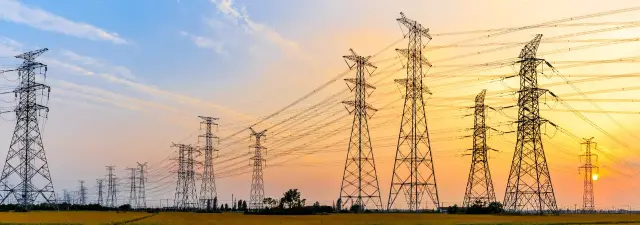
Protection Application for Power Transmission Systems
3 Days
Learning
After successful completion of this course, participants would be able to understand the fundamental philosophy of power system protection. They would also gain knowledge on basic fault analysis, helping them to analyze system events and perform post fault trouble shooting and suggest improvements. Participants of this course would also learn the operating principles of all protection systems present in a power transmission systems (such as distance, transformer, line differential and busbar protection). They would also learn the technical issues behind selection of instrument transformers for a given application. With the knowledge gained in this course, they would be able to operate and maintain the protection system of an electrical power transmission system better and also perform effective and fast trouble shooting when required.
Participants
Practicing engineers working in power transmission utilities, large industries, transmission system operators and consultants will benefit from this course. To derive maximum benefit from the course, we recommend that only participants with electrical engineering background take up this course. Participants could be technicians, operations staff, planning engineers, maintenance engineers, application engineers or commissioning engineers.
Course Outline
Fundamental Concepts
- Various elements of power system
- Operating states of the power system
- Building blocks of protection system
- Vital properties of a protection system
- Zones of protection
- Main and back-up protection
- Monitoring of protection system
Basic Fault Calculation
- Types of faults
- Single-phase and three-phase fault calculations
- Per unit calculation method
- Worked examples for fault calculations
Instrument Transformers
- Types of current transformers
- Effect of current transformer core and winding design on its performance
- Causes of errors in current transformers
- Reasons for saturation of current transformers and its effect on protection
- Specification of current transformers used for protection and metering applications
- Types of voltage transformers
- Specifying voltage transformers for protection and metering applications
- Various methods of connection of voltage transformers and their application
Distance Protection
- Benefits of using distance protection for transmission lines
- Introduction to impedance plane and three phase impedance measurement
- Various operating characteristics of distance protection and their application
- Distance protection zones and their setting
- Switch-on-to fault and its detection
- Principle of power swing detection in distance protection
- VT supervision and their importance for distance protection
- Communication aided schemes for distance protection
Line Differential Protection
- Current differential protection principle
- Differential protection characteristics
- Techniques for synchronising signals
Transformer Protection
- Types of 3-phase transformer connections
- Fault current distribution in 3-phase transformers
- Types of faults in transformers
- Transformer differential protection
- Restricted EF protection for star and delta winding
- Backup OC and EF protection
- Ancillary protection of transformers
Busbar Protection
- Various types of bus configuration and their benefits
- High impedance busbar protection schemes
- Bias differential bus bar protection
- Blocking schemes for protection of bus bars in radial system